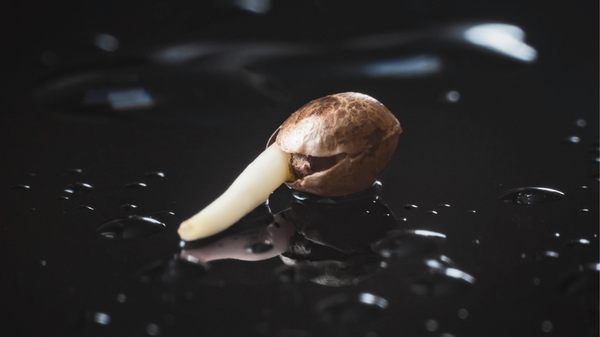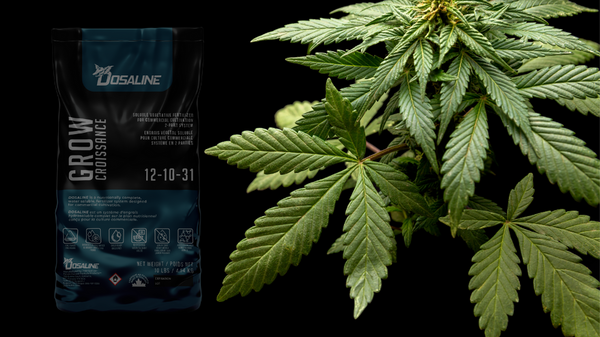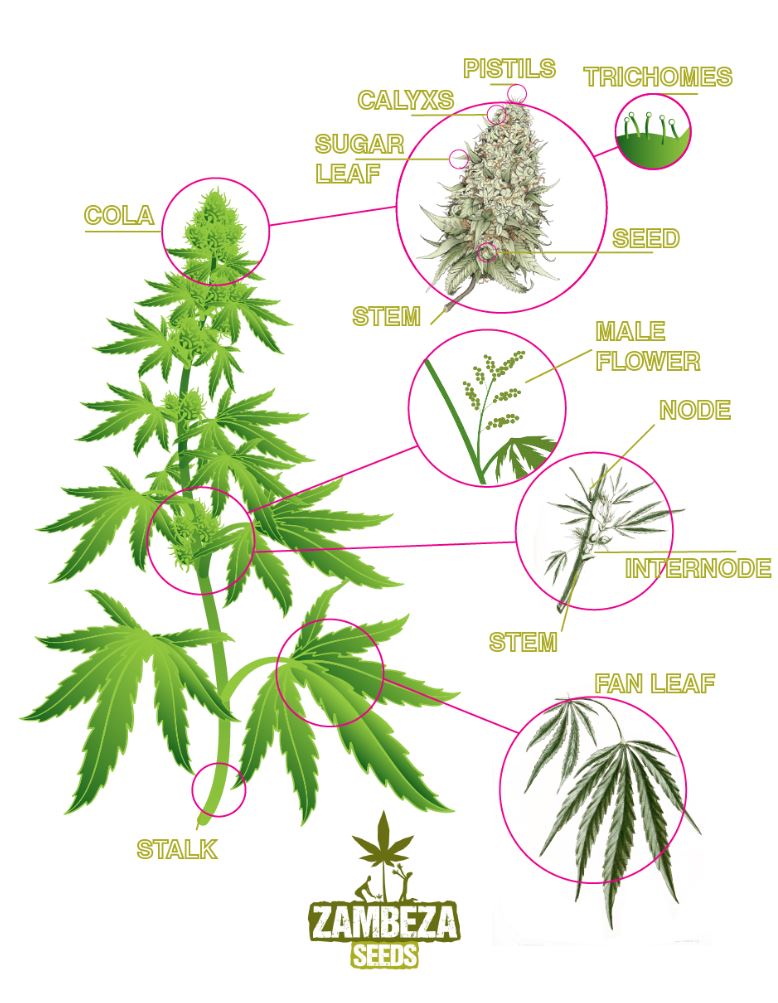The 5 Stages of Cannabis Growth - From Seed to Harvest

The process from seed to harvest varies, influenced by factors such as strain genetics, whether the plants are grown indoors or outdoors, and grower interventions. On average, it can take anywhere from a few weeks for certain autoflowering varieties, to several months for photoperiod strains. This introductory guide will walk you through the essential stages of cannabis growth, providing insights to optimize each phase for a successful harvest.
How long does it take to grow weed?
On average, growing cannabis from seed to harvest can take about 3-8 months. The shortest timeline is often seen with autoflowering strains, which can complete their cycle in as little as 10 weeks. On the other end, some photoperiod strains grown outdoors might not be ready for harvest until after 8 months, depending on environmental conditions. Starting from clones or seedlings can also affect the timeline, potentially speeding up the process since these start further along in the growth cycle than germinating seeds from scratch. Factors such as strain genetics, growing environment (indoor vs. outdoor), and grower interventions (like light control in indoor setups) play significant roles in determining the overall timeline.
Average Cannabis Growth Timeline
- Germination Stage (2-7 days)
- Seedling Stage (2-3 weeks)
- Vegetative Stage (3-15 weeks)
- Flowering Stage (7-14 weeks)
- Harvesting and Processing (4-7 weeks)
Germination Stage
The germination stage is the initial phase of cannabis growth, taking 48 hours to 7 days, depending on the method. It begins with activating the seed in a moist, dark environment, leading to the emergence of the radicle (primary root). After this, the seed is ready for planting in a chosen medium. Key conditions for successful germination include maintaining moisture without soaking, an ambient temperature of around 25°C, and a humidity level of 60%-75%. No additional nutrients are needed at this stage, as the seed contains sufficient nutrients for initial growth.
Expert Insight: Seed Viability Test
Did you know you can test the viability of your cannabis seeds before germinating them? Seeds that sink to the bottom of a glass of water are generally viable, while floating seeds often lack the density of healthy embryonic tissue. Additionally, the 'squeeze test,' where viable seeds resist compression, can save you time by sowing only those seeds with the best chances of germination.
Seedling Stage
The seedling stage, lasting approximately 2-3 weeks, follows successful germination. During this period, seedlings develop their first true leaves, distinct from the initial rounded cotyledons, beginning with single leaflets that evolve into sets of 3, then 5 leaflets as the root system establishes. Optimal growth conditions include a light spectrum conducive to young plants, moderate watering to prevent damping off, and an environment with 60%-75% humidity. Nutrients are generally unnecessary initially, as the seed provides sufficient sustenance, but a gentle rooting formula can be introduced to support root development.
Expert Insight: Critical Early Hours
The first 72 hours after germination are critical for a seedling's survival. During this time, the fragile seedling is establishing its root system and beginning to photosynthesize on its own. Extra attention to moisture levels and gentle handling during this period can significantly increase the chances of a strong and healthy plant.
Vegetative Growth Stage
During the vegetative stage, cannabis plants focus on leaf and stem growth, preparing for future flowering. This phase, lasting 3-15 weeks, is when plants require more nutrients, particularly nitrogen for chlorophyll production. The light schedule should be around 18 hours of light per day to encourage growth. The environment should have humidity levels between 55-65% and temperatures between 21-27°C. Adequate spacing for air circulation and careful monitoring of water and pH levels are also crucial. This stage is essential for building a strong structure that supports the flowering phase.
Expert Insight: Light Spectrum Choices
Choosing the right light spectrum during the vegetative stage can make a significant difference in plant development. Full-spectrum LED lights can provide a balanced light source that closely mimics natural sunlight, promoting vigorous growth. Additionally, implementing vegetative training techniques such as Sea of Green (SOG) or Screen of Green (ScrOG) can optimize your grow space and light usage, leading to a more efficient and productive grow operation.
Flowering Bloom Stage
The flowering stage in cannabis cultivation typically spans 7-14 weeks, depending on the strain. This phase begins when light exposure is reduced to 12 hours daily, signaling the plants to start producing buds. Early in flowering, growers can identify the sex of their plants, an essential step for preventing unwanted pollination. This stage requires careful monitoring of light, nutrients, especially phosphorus for bud development, and environmental conditions to optimize bud growth and potency. For a deeper understanding of managing this critical phase, including identifying plant sex, it's beneficial to consult articles focused on cannabis gender and flowering strategies.
Expert Insight: Photoperiod Manipulation
In the flowering stage, indoor growers can manipulate the photoperiod—altering the light-to-dark ratio to trigger and support the flowering process. This simulates the natural transition from the long days of summer to the shorter days of autumn, encouraging the plants to bloom. Careful control of the light schedule is essential to maximize bud production and potency.
Harvesting and Processing

The final phase of cannabis cultivation, harvesting, is when growers reap the fruits of their labor. Timing is crucial; harvest too early, and potency may be low; too late, and THC can degrade. Look for signs like the color of trichomes changing from clear to milky or amber. After cutting the plant, it's divided into smaller branches for drying in a cool, dark room with 40-50% humidity for 7-14 days. Curing, an optional but recommended step, involves storing dried buds in airtight containers to enhance flavor and smoothness, typically lasting 1-3 weeks. Proper drying and curing prevents mold and preserves cannabinoids, ensuring a high-quality final product.
Expert Insight: The Flushing Technique
Before harvesting, many experienced growers employ a flushing stage, where they stop providing nutrients and give plants only water for the last one to two weeks of the flowering stage. This helps to flush out any residual nutrients from the soil and plant tissue, ensuring a clean-tasting and high-quality final product without unwanted flavors or harshness from nutrient buildup.
From Seed to Stalk: Sustainable Post-Harvest Practices
After the careful process of harvesting and curing your cannabis, you're presented with a variety of end products and byproducts. Each part of the plant offers potential uses, ensuring you can utilize your harvest fully and efficiently.
- Buds: The star of the show, cured buds are ready for consumption. Whether you prefer smoking, vaporizing, or creating edibles, the buds are the primary source of the cannabinoids and terpenes that provide the desired effects and flavors.
- Trim: Don't discard those leaves trimmed off the buds. They can be used to make cannabutter or cannabis oil, which serve as the base for edibles or topicals.
- Fan Leaves: Large fan leaves, while not as potent as buds or trim, can be juiced or used to make teas. They contain cannabinoids and chlorophyll, offering potential health benefits.
- Water Leaves: These are the smaller leaves that grow closer to the buds, often trimmed during harvest. They contain higher levels of cannabinoids than fan leaves and can be used in making concentrates or edibles.
- Stem Tea: Cannabis stems, though not as potent, can be used to brew a mild tea. They're also suitable for making homemade hemp wicks.
- Stalks: Chopped cannabis stalks can be used as mulch for gardens, providing soil protection and nutrient recycling as they decompose.
- Roots: Historically, cannabis roots have been used to prepare teas or tinctures, which some believe to help with inflammation and pain.
- Seeds: If your plants produced seeds, they can be used for your next grow, consumed as a nutritious snack, or processed into hemp seed oil, which is rich in essential fatty acids.
By finding a purpose for every part of the cannabis plant, you minimize waste and maximize the return on your investment. Not only does this approach benefit you as a grower, but it also supports a more sustainable and environmentally conscious use of the cannabis plant.
Legal Considerations
For legal considerations regarding cannabis cultivation in North America, it's essential to consult local regulations. In Canada, Health Canada provides comprehensive details on cannabis laws and regulations, which can be found at Canada.ca. For the United States, laws vary by state, and the National Organization for the Reform of Marijuana Laws (NORML) offers an updated guide to state laws, accessible at NORML's State Laws. Always ensure your growing practices comply with the specific legal framework of your region.






4 commentaires
It’s fantastic that you’ve highlighted sustainable practices, like using every part of the plant, which is an important consideration for eco-conscious growers. Keep up the great work!
This is great information for marijuana growers!
The 5 stages are explained so clearly, and it’s great to see the focus on the details that can really help growers optimize each phase. I especially appreciate the tips on how to care for plants during the vegetative and flowering stages those can be tricky.
I love this whole article – it’s short to the point, and easily understood by the lay person